Nothing compares to the delight of growing your own herbs in pots. Herbs add flavor, scent, and energy to your house, whether you’re growing rosemary to enrich your roasted foods, mint for a refreshing tea, or basil for a fresh pasta sauce. But pests may rapidly turn a successful herb garden into a frustrating one, as every gardener knows. If left untreated, aphids, spider mites, whiteflies, and other undesirable guests can seriously harm your plants.
The good news is that you can safeguard your herbs without using harsh chemicals or artificial pesticides. Safe, efficient, and environmentally friendly solutions that cooperate with nature rather than fight it are provided by organic pest control. You can preserve a sustainable environment while keeping your potted herbs pest-free and healthy by utilizing natural cures, preventive care, and astute planting techniques.
Our “Proven Guide to Organic Pest Control for Potted Herbs” will cover all you need to know, from recognizing common pests to putting tried-and-true techniques that protect your plants into practice. These helpful hints will enable you to grow your herbs organically and savor the results (or leaves!) of your labor, regardless of your level of gardening experience. Let’s begin the journey to a successful herb garden without of chemicals!
Natural Pest Control for Potted Herbs: Proven Organic Solutions
Identifying Common Pests Affecting Potted Herbs
Recognize the pests that prey on potted herbs to begin managing them successfully. When detecting common pests on indoor herbs, check for symptoms such as chewed foliage, webbing, or sticky leaves that indicate a pest infestation in potted herbs.
Small sap-suckers called aphids gather on fresh growth and cause the leaves to curl. Spider mites produce yellow stippling and tiny webs; they are hardly noticeable. Mold is created when whiteflies, which are tiny white moths, expel honeydew. Whereas thrips produce glittering streaks, slugs and snails leave slimy holes and trails.
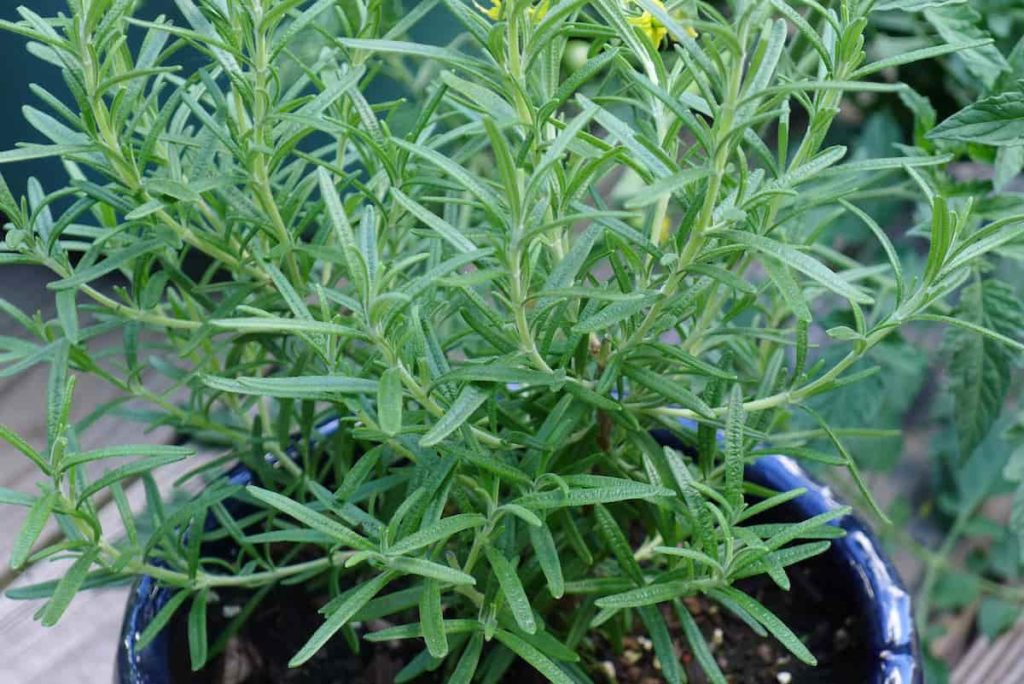
Fungus gnats are a sign of overwatering, and caterpillars strip plants of their leaves. Ants alert other pests, leafhoppers produce stippling, while mealybugs and scale insects create waxy or hard coats.
Regular inspection is essential, preferably once a week, with a magnifying lens for little pests. It helps to foresee problems by keeping a record to document the identification and organic treatment of herb pests. Early identification keeps damage from spreading and guarantees the health of your herbs. Early aphid detection, for instance, enables quick, natural action in organic pest control for basil plants. This proactive strategy promotes a flourishing herb garden.
| Pest | Description | Signs | Common Control |
|---|---|---|---|
| Aphids | Small, soft-bodied insects | Sticky leaves, curling leaves | Neem oil, ladybugs |
| Spider Mites | Tiny, spider-like pests | Fine webs, yellow stippling | Humidity, predatory mites |
| Whiteflies | Tiny white flies | Honeydew, mold on leaves | Sticky traps, parasitic wasps |
| Slugs/Snails | Soft-bodied mollusks | Slimy trails, holes in leaves | Copper tape, beer traps |
| Thrips | Slim, fast-moving insects | Silver streaks, distorted growth | Sticky traps, predatory mites |
| Caterpillars | Larvae of butterflies/moths | Chewed leaves, defoliation | Handpicking, BT |
Implementing Proactive Pest Prevention for Potted Herbs
Treating insect infestations is more difficult than preventing them. Choosing healthy plants and keeping new ones in quarantine for a week will help you reach best practices for pest-free potted herbs.
Use the best herb gardening pots to keep pests out, such as terra-cotta with drainage holes, and use potting mix that drains effectively to keep fungus gnats away from potted herbs. Proper watering, as opposed to overwatering, keeps organic root rot in potted herbs from occurring, which draws pests.
Herbs do best in bright, well-ventilated regions because pests like moist, shaded places. Avoid overfertilizing because pests like aphids are drawn to basil’s luxuriant growth. Additionally, clean pots frequently to remove hiding places.
Early detection of pests in indoor herbs is ensured by routine monitoring. These methods of pest prevention for potted herbs make the environment unwelcoming to pests, which lessens the need for reactive measures and promotes a healthy herb garden. Regular maintenance, such as using the right watering methods to keep pests away from potted herbs, creates hardy plants that are inherently resistant to infestations.
| Preventive Measure | Description | Benefit | Implementation Tip |
|---|---|---|---|
| Quarantine new plants | Isolate for a week | Prevents pest introduction | Check for pests daily |
| Well-draining pots | Terra-cotta with holes | Reduces root rot | Ensure proper drainage |
| Proper watering | Let soil dry between waterings | Prevents overwatering pests | Use moisture meter |
| Sunny location | Bright, ventilated spots | Deters shade-loving pests | Place near windows |
| Regular pot cleaning | Remove debris | Eliminates hiding spots | Wash with soap weekly |
| Balanced fertilization | Avoid excess nitrogen | Prevents attracting pests | Use organic compost |
Using Companion Planting to Deter Pests in Potted Herbs
Plant interactions are used in companion planting to naturally repel pests. Consider combining herbs with marigolds when investigating companion planting for pest management in potted herbs.
Marigolds’ powerful fragrance deters aphids and whiteflies. While their blooms draw pollinators, nasturtiums serve as trap crops, drawing pests away from herbs. By growing garlic or chives next to herbs, you can cover up pest-attracting smells and improve pest management with basil.
Ladybugs and lacewings are attracted to dill and cilantro because they consume soft-bodied parasites. Select companions with comparable light and water requirements because pots have limited room. For example, marigolds and rosemary in a pot can efficiently repel pests.
In addition to protecting your herbs, this technique makes your garden more aesthetically pleasing and pest-resistant. By using companion planting to keep pests away from parsley, you may boost the aesthetic appeal and yield of your herb garden while preserving a healthy environment that naturally lowers pest populations.
| Companion Plant | Repels | Benefits | Planting Tip |
|---|---|---|---|
| Marigolds | Aphids, whiteflies | Strong scent deters pests | Plant around pot edges |
| Nasturtiums | Aphids, squash bugs | Acts as trap crop | Place near herbs |
| Garlic | Aphids, spider mites | Masks herb scents | Plant in same pot |
| Chives | Carrot flies, aphids | Repels with odor | Space evenly with herbs |
| Dill | Spider mites, aphids | Attracts beneficial insects | Ensure adequate sunlight |
| Cilantro | Aphids, beetles | Draws predatory insects | Pair with parsley |
Encouraging Natural Predators to Control Herb Pests
Promoting natural predators is an effective organic tactic. Ladybugs, lacewings, and parasitic wasps—which feed on aphids, whiteflies, and caterpillars—are helpful insects that can be introduced to potted herbs to attract ladybugs.
While the larvae of lacewings combat a variety of pests, ladybugs can eat dozens of aphids per day. Garden centers sell these insects, or you can grow nectar-rich flowers like dill or alyssum to draw in beneficial insects for herb gardens.
By providing a water supply, such a shallow dish with stones, beneficial insects are more likely to stay. Release purchased insects in the dark to stop them from spreading, and stay away from harmful broad-spectrum sprays.
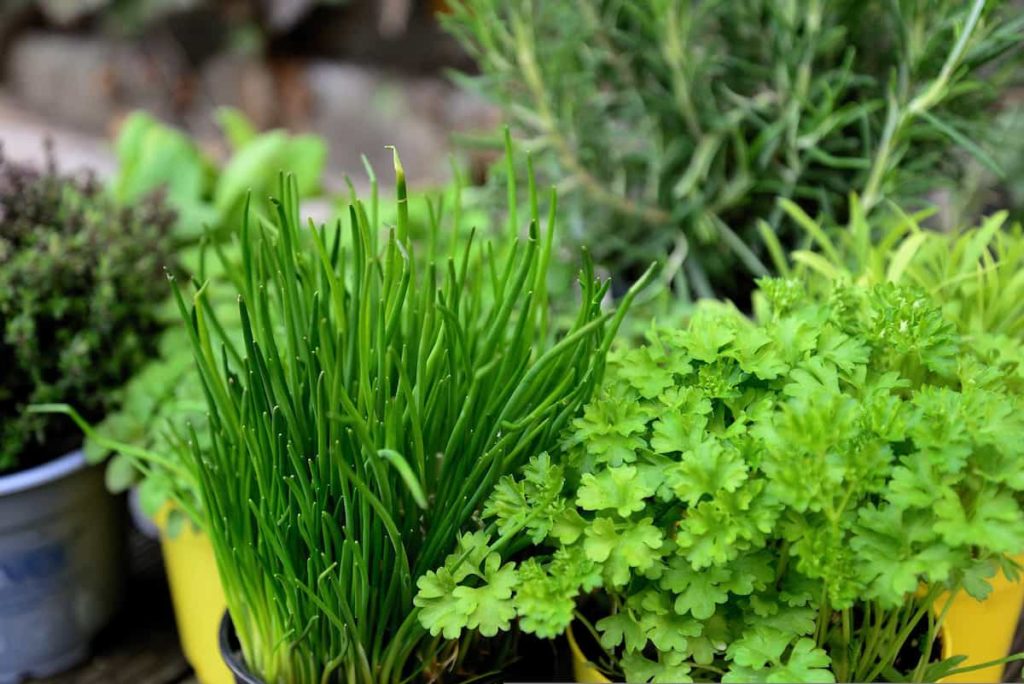
By promoting a healthy ecology, this strategy organically and sustainably lowers pest populations. By keeping a varied garden with flowering plants, you can assist natural predators for pest control in herb gardens and provide long-term pest management without the use of chemicals.
| Natural Predator | Prey | Attraction Method | Release Tip |
|---|---|---|---|
| Ladybugs | Aphids | Plant dill or alyssum | Release at dusk |
| Lacewings | Aphids, thrips | Nectar-rich flowers | Scatter larvae gently |
| Parasitic Wasps | Whiteflies, caterpillars | Plant fennel | Release near infested plants |
| Predatory Mites | Spider mites | Maintain humidity | Apply to affected areas |
| Hoverflies | Aphids | Plant marigolds | Ensure flowering plants |
| Tachinid Flies | Caterpillars | Diverse herb garden | Avoid broad-spectrum sprays |
Creating Homemade Organic Sprays for Potted Herbs
A safe and efficient method of controlling pests is to use homemade pesticides. A DIY organic insecticide for potted plants can be made by combining 1 quart of water with 1 tablespoon of mild dish soap, and for added strength, add 1 teaspoon of cayenne pepper.
By upsetting the exoskeletons of pests, this soap spray solution for potted herbs dehydrates them. An alternative that disrupts insect reproduction is neem oil. Apply diluted neem oil as directed on both leaf sides, starting with a tiny test area.
Garlic cloves should be blended with water, steeped, strained, and then applied to herb pests. Spray early in the morning or late at night to protect beneficial insects.
These inexpensive, natural herb pest repellents are manufactured at home and guarantee that your herbs are safe to eat. Making your own DIY pesticide for potted plants will help you keep herb growing environmentally friendly while quickly dealing with infestations.
| Spray Type | Ingredients | Application Tip | Safety Note |
|---|---|---|---|
| Soap Spray | Dish soap, water, cayenne | Spray undersides of leaves | Use mild soap |
| Neem Oil | Neem oil, water | Test on small area first | Safe for edibles |
| Garlic Spray | Garlic cloves, water | Strain before use | Avoid overuse |
| Chili Spray | Chili peppers, water | Wear gloves when preparing | Safe in moderation |
| Vinegar Spray | Vinegar, water | Use sparingly | Avoid leaf burn |
| Oil Spray | Vegetable oil, soap | Apply in evening | Test for plant sensitivity |
Using Essential Oils to Repel Pests from Potted Herbs
Strong-smelling natural insect repellents are essential oils. Add a few drops of peppermint, rosemary, or citronella oil to water in a spray bottle to use essential oils to keep insects away from oregano.
Peppermint keeps ants and aphids away, and rosemary keeps moths away. Citronella is a great natural remedy for lavender pest problems since it repels flying insects. To protect plants, dilute oils appropriately.
To maintain flavor, don’t spray herbs right before harvest. Target the undersides of the leaves, where bugs hide, and apply sparingly.
This approach improves ambiance and pest management while also adding a pleasing fragrance to your yard. Essential oil sprays, which use natural methods to repel pests from potted parsley, offer a safe, fragrant alternative that works well with other organic techniques to keep your herbs pest-free and flavorful.
| Essential Oil | Repels | Application Note | Safety Tip |
|---|---|---|---|
| Peppermint | Aphids, ants | Dilute well | Safe for most herbs |
| Rosemary | Moths, beetles | Use sparingly | Avoid sensitive plants |
| Citronella | Flying insects | Ideal for outdoor pots | Test on small area |
| Lavender | Moths, fleas | Enhances fragrance | Use in moderation |
| Tea Tree | General pests | Use cautiously | Avoid edible herbs |
| Eucalyptus | Spider mites | Dilute properly | Safe for most herbs |
Installing Physical Barriers to Protect Potted Herbs
One non-toxic method of protecting against pests is to use physical barriers. Use fine mesh netting to cover potted herbs to create physical barriers that keep flying insects like whiteflies out.
When placed close to plants without coming into contact with them, sticky traps catch flying and crawling pests. Because copper tape has a moderate electric reaction, slugs avoid crossing it, thus it’s a good technique to keep slugs away from potted herbs.
These barriers are simple to set up and keep up, providing instant defense without endangering the environment or plants. Copper tape for slug control in potted herbs keeps slugs from causing harm.
This technique guarantees that herbs stay whole and promotes the growth of safe, edible herbs.
| Barrier Type | Targets | Installation Tip | Maintenance Note |
|---|---|---|---|
| Mesh Netting | Flying insects | Cover entire pot | Check for tears |
| Sticky Traps | Flying, crawling pests | Place near plants | Replace when full |
| Copper Tape | Slugs, snails | Wrap around rim | Ensure tight fit |
| Diatomaceous Earth | Crawling insects | Sprinkle around base | Reapply after rain |
| Sand Layer | Fungus gnats | Top soil with sand | Keep layer thin |
| Gravel Cover | Soil-dwelling pests | Cover soil surface | Clean regularly |
Introducing Beneficial Insects to Control Herb Pests
In addition to drawing predators, beneficial insects can be deliberately introduced to efficiently manage pests. Ladybugs or lacewings bought from reliable vendors can be released to help introduce beneficial insects to herb gardens.
Plant fennel or dill to attract these insects by providing nectar. A tiny water supply, such as a marble-topped dish, helps them stay alive.
To ensure windowsill herb pest management, release insects in tiny batches to preserve the balance between pests and prey. Remain away from chemicals that might endanger these allies.
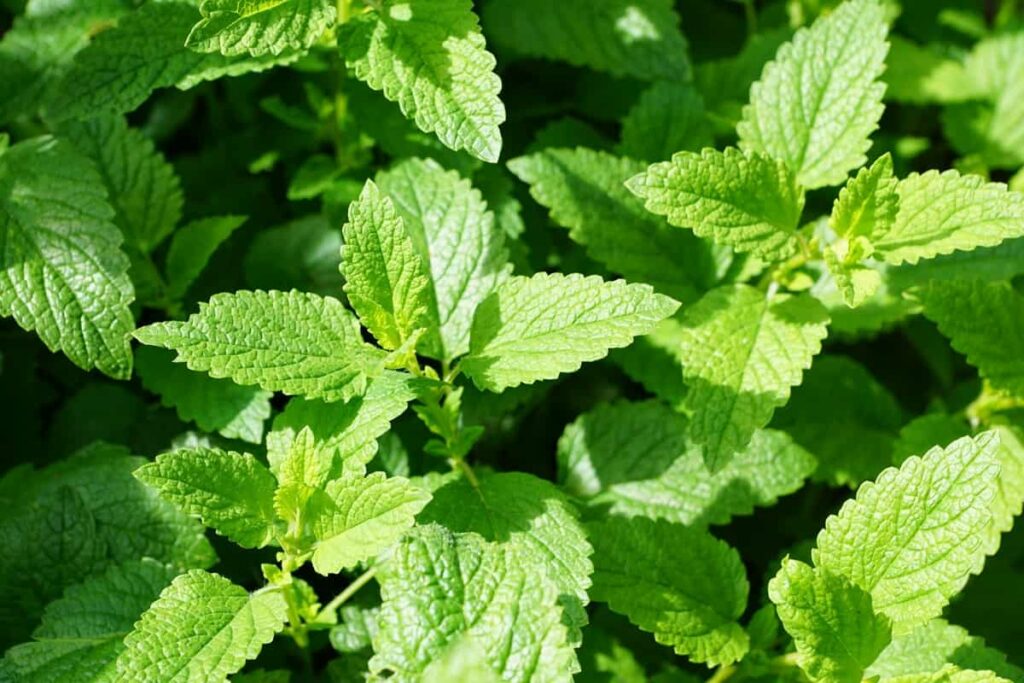
This technique creates a flourishing herb garden ecology by lowering insect populations and fostering biodiversity. The effectiveness of your organic pest management plan can be increased by targeting particular pests, such as whiteflies, with parasitic wasps for herb pest control.
| Beneficial Insect | Targets | Release Tip | Attraction Method |
|---|---|---|---|
| Ladybugs | Aphids | Release in evening | Plant alyssum |
| Lacewings | Aphids, thrips | Scatter larvae gently | Plant fennel |
| Parasitic Wasps | Whiteflies, caterpillars | Release near infested areas | Plant dill |
| Predatory Mites | Spider mites | Apply to affected areas | Maintain humidity |
| Hoverflies | Aphids | Attract with flowers | Plant marigolds |
| Nematodes | Fungus gnats | Apply to soil | Keep soil moist |
Maintaining Soil Health to Prevent Pests in Potted Herbs
Plants with healthy soil are more resilient and less vulnerable to pests. Compost can be added to soil amendments to improve soil fertility and structure for pest-resistant herbs.
Compost’s beneficial microorganisms inhibit diseases and pests that are carried by the soil. When growing herbs, use a balanced organic fertilizer that keeps pests away, such as fish emulsion, which keeps insects away while feeding plants.
Avoid overfertilizing because pests are drawn to too much nitrogen. To avoid root rot, which attracts pests, keep an eye on the moisture content of the soil. In order to maintain strong herb growth and organic insect resistance, regular soil testing guarantees ideal pH and nutrient levels.
By concentrating on organically preventing root rot in potted herbs, you build a solid foundation for pest-free herbs and lessen the need for further treatments.
| Soil Practice | Description | Benefit | Implementation Tip |
|---|---|---|---|
| Compost | Improves soil structure | Suppresses pests | Add monthly |
| Fish Emulsion | Deters insects | Nourishes plants | Dilute per instructions |
| Soil Testing | Checks pH, nutrients | Ensures plant health | Test biannually |
| Moisture Control | Avoid overwatering | Prevents root rot | Use moisture meter |
| Mycorrhizae | Beneficial fungi | Enhances root health | Add during potting |
| Organic Mulch | Covers soil surface | Reduces pest access | Use bark or straw |
Monitoring Potted Herbs Regularly for Early Pest Detection
In order to handle pests, vigilance is essential. In order to handle routine pest monitoring for indoor herbs, check plants once a week for insects, sticky residue, or discolored foliage.
Spider mites and other small pests can be seen with a magnifying glass. Infestations can be avoided by taking early measures like hand-removing aphids or misting them with water.
Maintain a notebook to monitor pest trends and determine how frequently to treat herbs using organic pest management. Your herbs will stay healthy and productive thanks to this preventative measure, which also lessens damage and the need for treatments.
Knowing how to check potted herbs for pests will help you identify problems early and keep your herb garden flourishing with few pest-related interruptions.
| Monitoring Practice | Description | Frequency | Tool Needed |
|---|---|---|---|
| Weekly Inspection | Check for pest signs | Every 7 days | Magnifying glass |
| Journal Tracking | Record pest occurrences | Ongoing | Notebook or app |
| Leaf Undersides | Check hidden pests | Weekly | Flashlight |
| Sticky Traps | Monitor flying pests | Check weekly | Yellow sticky cards |
| Water Spray Test | Dislodge small pests | As needed | Spray bottle |
| Visual Check | Look for plant stress | Daily | None |
Controlling Aphids on Potted Herbs Naturally
Although aphids are a frequent hazard to potted herbs, especially basil, the best organic techniques for controlling aphids on herbs work well. Apply a powerful stream of water to remove aphids from potted basil, repeating as necessary.
Aphid feeding and reproduction are disrupted when neem oil is applied to potted herbs to treat recurrent infestations. Spray well, paying special attention to the undersides of the leaves, after combining neem oil and water as directed.

An alternative is to use safe insecticidal soap for edible potted herbs, which suffocates aphids upon contact. To prevent damage to the plants, test a small area first. There is encouragement for introducing ladybugs to potted herb gardens since they consume dozens of aphids every day.
Combine these techniques with routine inspection for organic pest control of basil plants to avoid re-infestation. Aphids are drawn to lush growth that is promoted by synthetic fertilizers, therefore stay away from them. By controlling aphid numbers, these natural methods of herb aphid management guarantee that your herbs are safe to eat.
| Method | Description | Effectiveness | Safety |
|---|---|---|---|
| Water Spray | Dislodge aphids | Temporary | Safe |
| Neem Oil | Disrupts reproduction | Long-term | Safe for edibles |
| Insecticidal Soap | Suffocates aphids | Effective on contact | Safe if used correctly |
| Ladybugs | Natural predators | Sustainable | Safe, beneficial |
| Garlic Spray | Repels aphids | Deterrent effect | Safe for herbs |
| Companion Planting | Repels aphids | Preventive | Safe |
Managing Spider Mites on Potted Herbs Organically
Tiny pests called spider mites can seriously harm leaves by producing stippled and webbing. Since spider mites prefer dry environments, boost humidity when using natural methods to manage them on herbs.
Putting pots together or using a humidity tray can help make the climate less ideal. Neem oil is a direct herb pest management solution that smothers mites and eggs; use caution while applying it to prevent leaf burn.
Predatory mites provide biological control by feeding on spider mites and are innocuous to plants. Although it can be used, a homemade soap spray for potted herbs produced with water and mild dish soap needs to be used carefully to avoid damaging the plants.
Frequent monitoring is essential to identifying organic pest management problems with rosemary plants early on, particularly in hot, dry conditions. To naturally combat spider mites on herbs, look for webbing on the leaves once a week. These techniques preserve the environment while protecting your herbs.
| Method | Description | Effectiveness | Safety |
|---|---|---|---|
| Increase Humidity | Use humidity tray | Prevents mite growth | Safe |
| Neem Oil | Smothers mites | Effective with repetition | Safe for edibles |
| Predatory Mites | Natural predators | Long-term control | Safe, beneficial |
| Soap Spray | Suffocates mites | Effective on contact | Use cautiously |
| Water Spray | Dislodge mites | Temporary | Safe |
| Prune Infested Leaves | Remove affected areas | Reduces mite population | Safe |
Eliminating Whiteflies from Potted Herbs Naturally
Whiteflies are tiny insects that feed on sap and can take over potted herbs if left unchecked. In order to naturally control whiteflies on indoor herbs, begin by repeatedly spraying plants with a powerful water jet to knock them off.
Yellow sticky traps catch adult whiteflies and are an efficient way to control pests in herbs. Apply insecticidal soap to potted herbs thoroughly, including the undersides of the leaves, as it targets both adults and nymphs.
By preventing whitefly reproduction, neem oil applied to potted herbs provides long-term control. The introduction of parasitic wasps, which deposit their eggs within whiteflies, offers biological control; for optimal effects, release them in the evening.

Stress-free, healthy plants are less vulnerable, so take good care of them. Regular inspection helps minimize whitefly accumulation when using natural remedies for whiteflies on potted herbs. By ensuring that your herbs stay tasty and healthy, these techniques promote sustainable gardening.
| Method | Description | Effectiveness | Safety |
|---|---|---|---|
| Water Spray | Dislodge whiteflies | Temporary | Safe |
| Yellow Sticky Traps | Capture adults | Effective trap | Safe |
| Insecticidal Soap | Kills adults, nymphs | Effective on contact | Safe if used correctly |
| Neem Oil | Disrupts reproduction | Long-term | Safe for edibles |
| Parasitic Wasps | Biological control | Sustainable | Safe, beneficial |
| Reflective Mulch | Confuses whiteflies | Preventive | Safe |
Preventing Slugs and Snails in Potted Herb Gardens
Slugs and snails leave slimy tracks and holes on potted herbs because they like moist environments. Copper tape around pot rims is one physical barrier that can be used to keep slugs out of container herb gardens. Slugs hate copper tape because it has a moderate electric reaction.
These pests can be killed by scattering diatomaceous earth around the bases of pots. Beer traps are shallow beer-filled containers that draw and submerge slugs.
Mint in pots can benefit from natural pest control by being planted with slug-repellent herbs like lavender or rosemary. To remove hiding places, remove weeds and trash. Use a flashlight to examine pots at night for handpicking.
The following techniques work very well for preventing slugs from getting near potted herbs. Frequent inspection and maintenance keep bugs at bay and guarantee that your herbs stay healthy. Easy, affordable, and safe for edible herbs are these beer traps for slugs in container herbs.
| Method | Description | Effectiveness | Safety |
|---|---|---|---|
| Copper Tape | Creates barrier | Highly effective | Safe |
| Diatomaceous Earth | Dehydrates slugs | Effective on contact | Safe |
| Beer Traps | Attract and drown slugs | Very effective | Safe |
| Companion Planting | Repels slugs | Long-term | Safe |
| Handpicking | Remove slugs manually | Immediate | Safe |
| Eggshell Barrier | Deters slugs | Moderate | Safe |
Combating Thrips on Potted Herbs Organically
Silver streaks and deformed growth on potted herbs are caused by tiny insects called thrips. To combat thrips on herb plants naturally, catch adults and larvae using blue sticky traps.
Neem oil suffocates thrips when applied to potted herbs; make sure to cover the undersides of the leaves. Another good choice is insecticidal soap for potted herbs, which needs to be reapplied every seven to ten days.
Beneficial insects that prey on thrips, such as lacewings or predatory mites, can be introduced to herb gardens. Thrips love dry conditions, therefore increasing the humidity discourages them. Maintain plant cleanliness by removing infected leaves to stop the infestation from spreading.
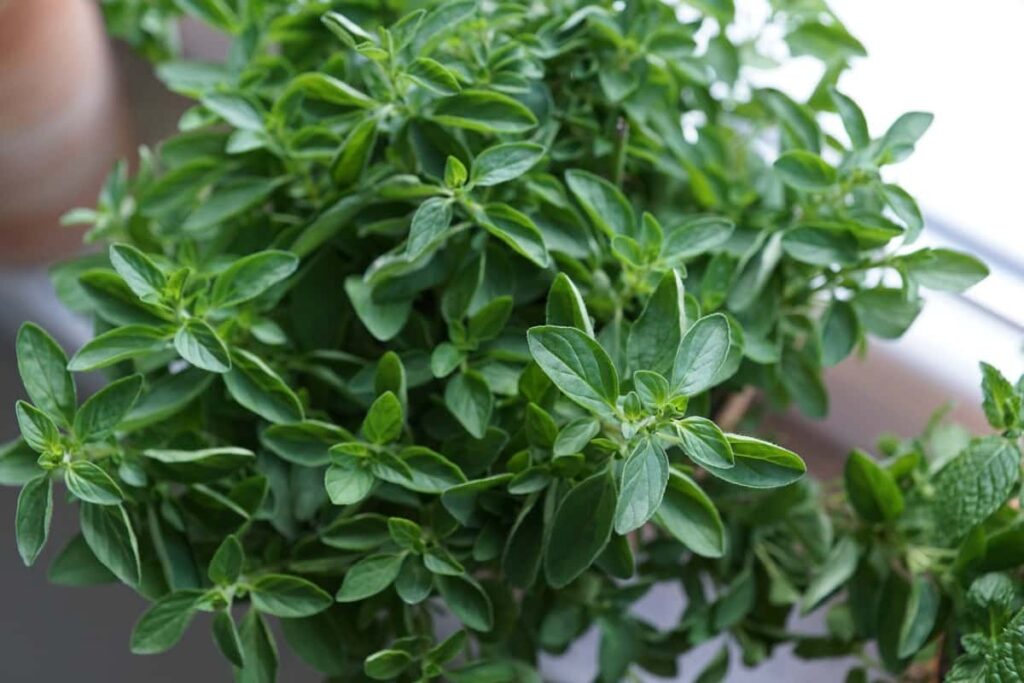
Early intervention is crucial when it comes to organic pest management for basil plants. By using a magnifying glass to monitor thrips on a regular basis, population explosions can be avoided. These top organic herb plant pesticides guarantee that your herbs stay pest-free and healthy while promoting environmentally friendly growing techniques.
| Method | Description | Effectiveness | Safety |
|---|---|---|---|
| Blue Sticky Traps | Capture thrips | Effective trap | Safe |
| Neem Oil | Suffocates thrips | Effective with repetition | Safe for edibles |
| Insecticidal Soap | Kills thrips | Effective on contact | Safe if used correctly |
| Predatory Mites | Natural predators | Long-term | Safe, beneficial |
| Increase Humidity | Deter thrips | Preventive | Safe |
| Remove Infested Leaves | Reduces spread | Immediate | Safe |
Conclusion
Keeping pests away from your potted herbs doesn’t have to mean sacrificing your dedication to sustainable and organic gardening methods. You can successfully control pests and maintain the health, vibrancy, and chemical-free status of your herbs by putting the tried-and-true natural remedies described in this guide into practice. These techniques enable you to naturally manage your herb garden, from preventive measures like companion planting and appropriate soil management to DIY cures like neem oil sprays and garlic solutions.
Keep in mind that organic pest treatment aims to create a healthy ecosystem so your plants may flourish, not only get rid of issues. You can protect your herbs and strengthen your bond with nature by being persistent, patient, and a little creative. Get your hands dirty, try these techniques, and experience the joy of caring for a healthy, pest-free herb garden that is safe for both the environment and your family. Have fun with your gardening!

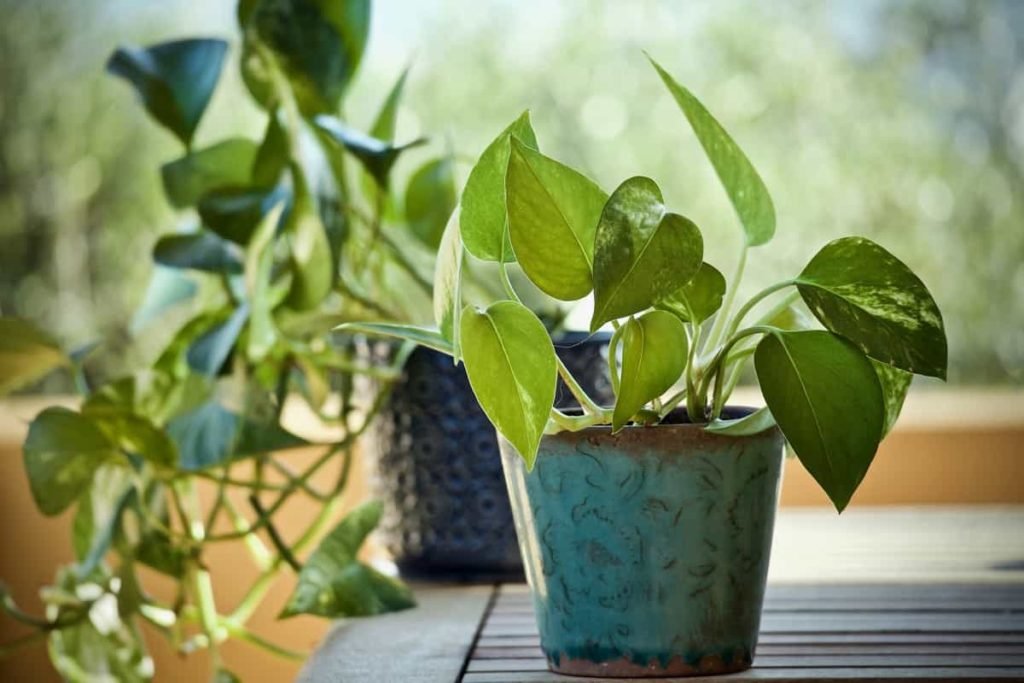

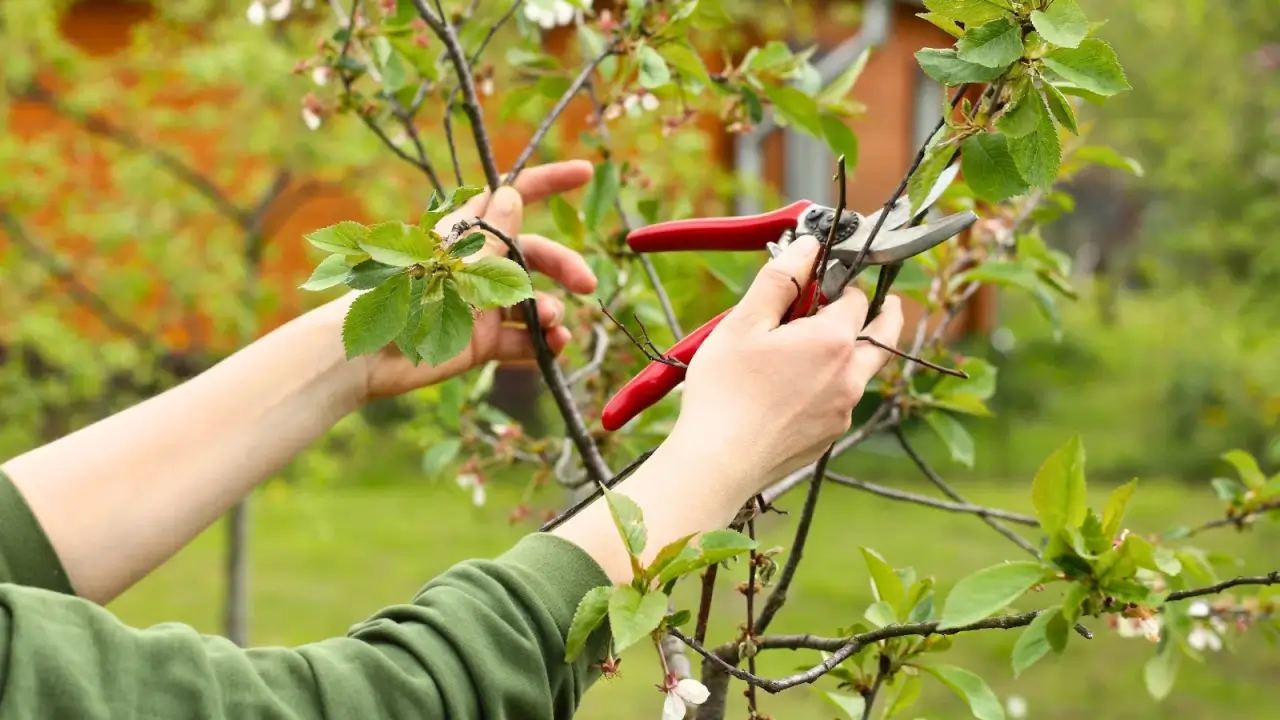



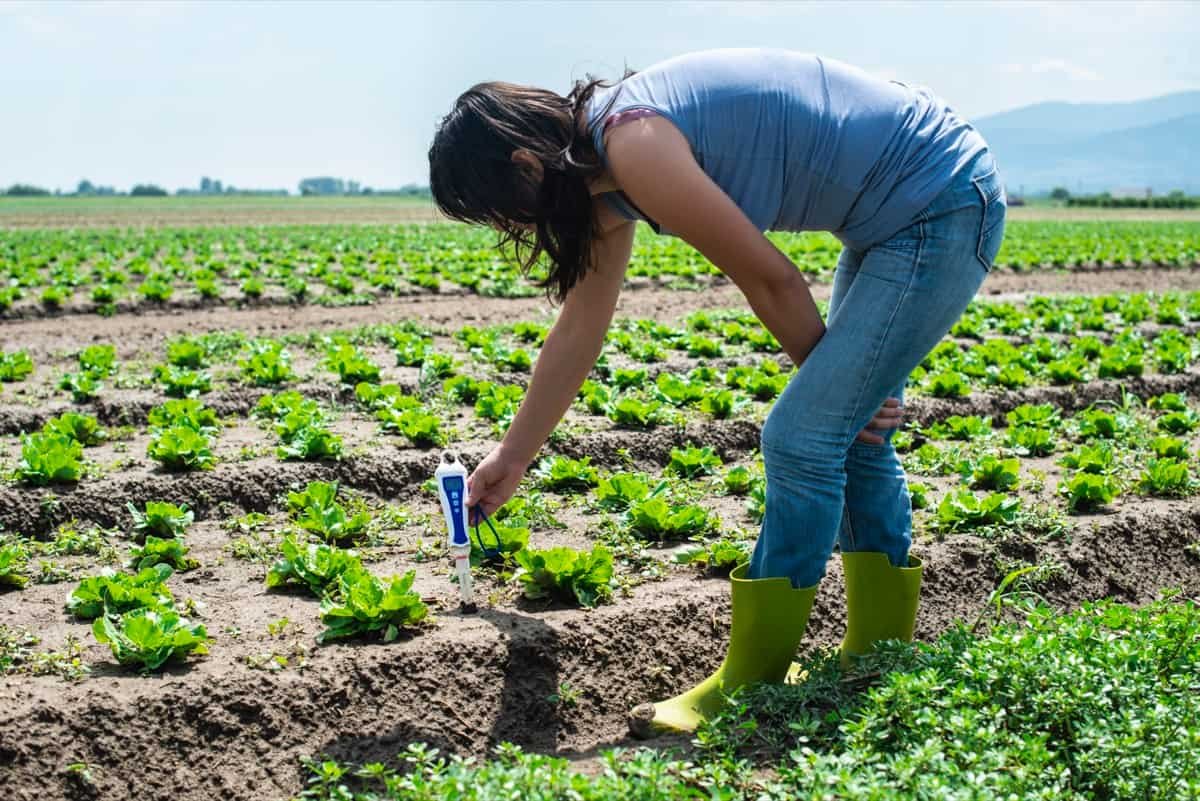
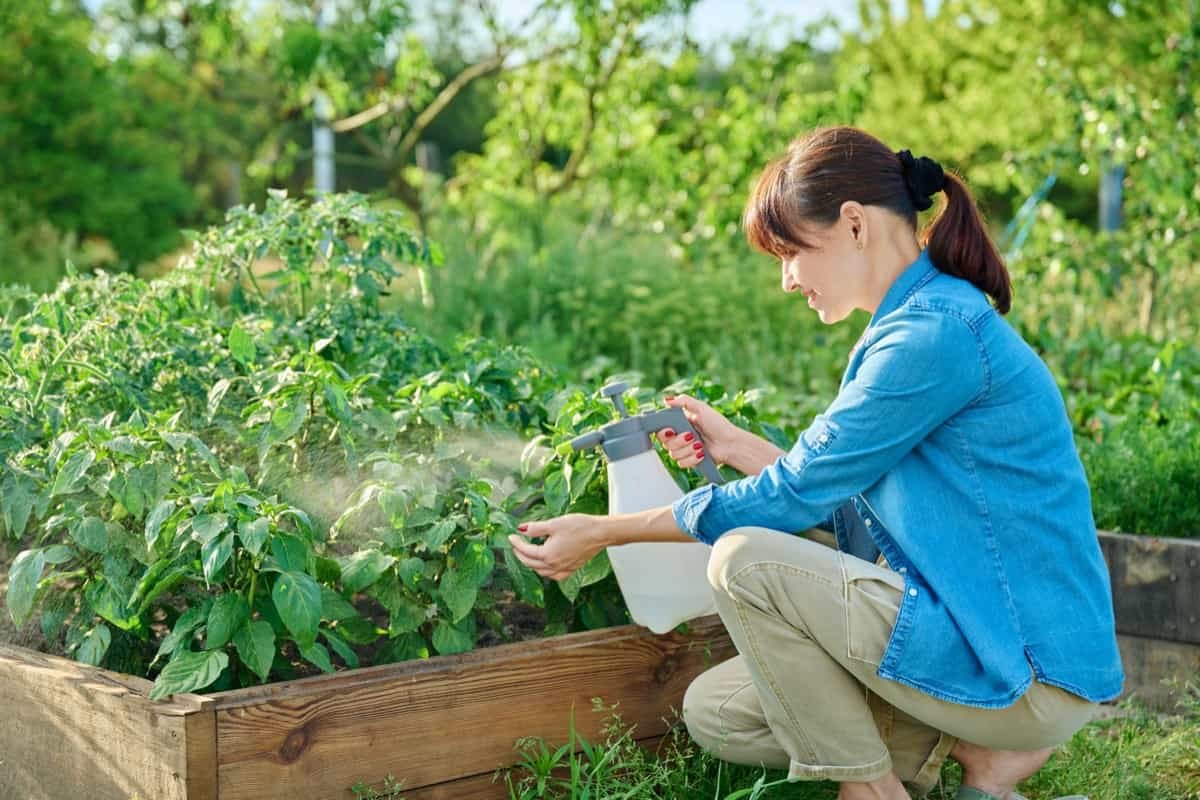

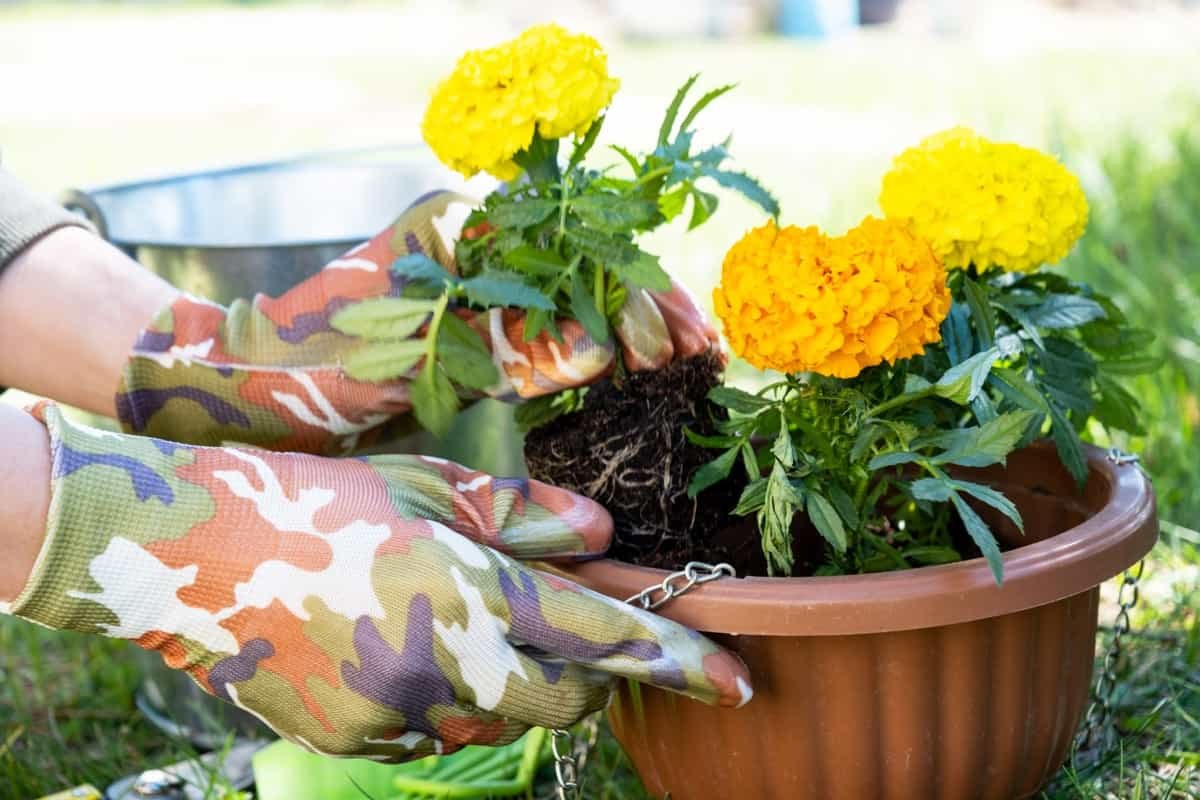




Leave a Reply